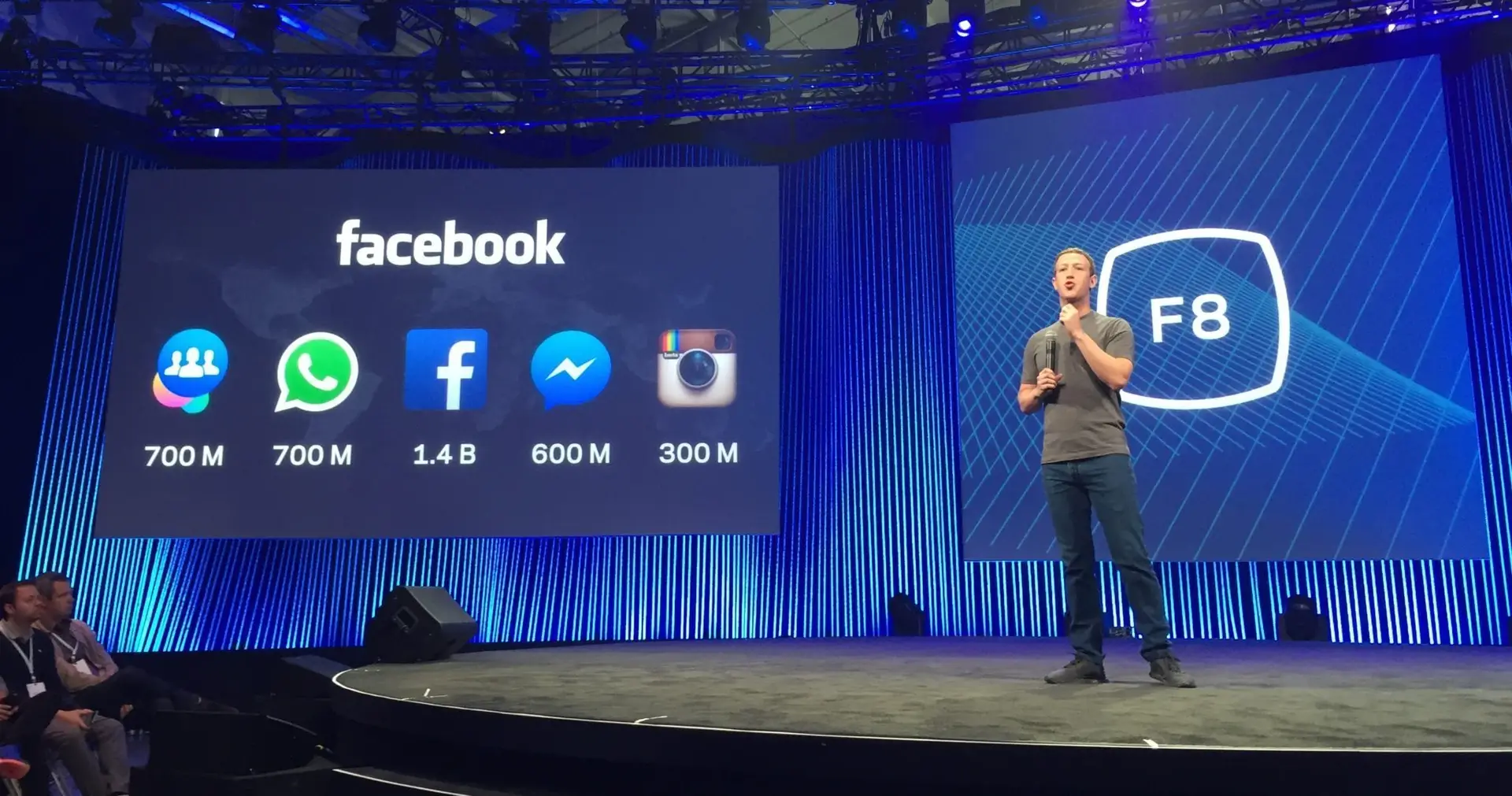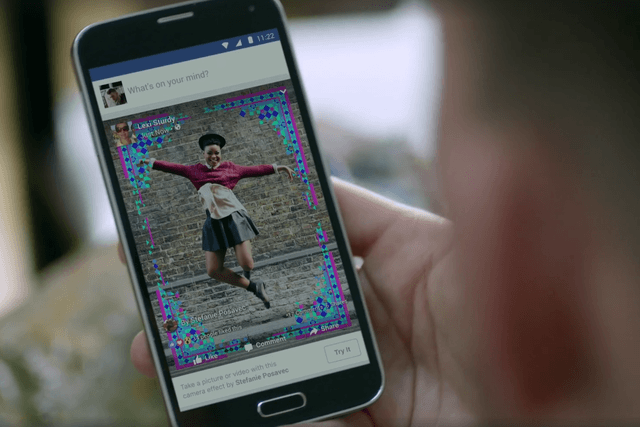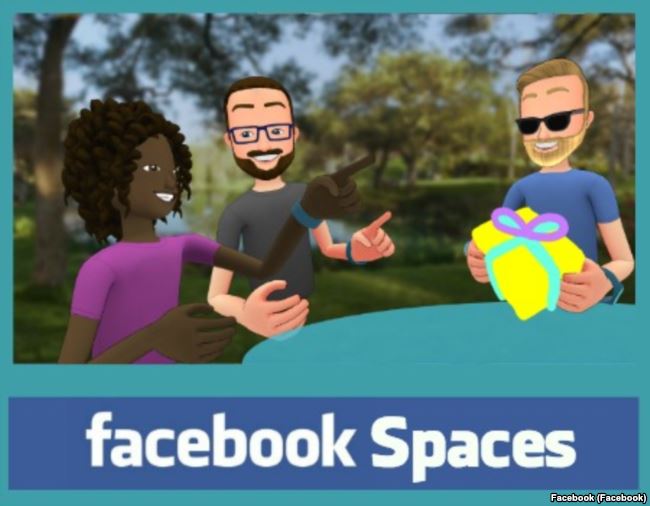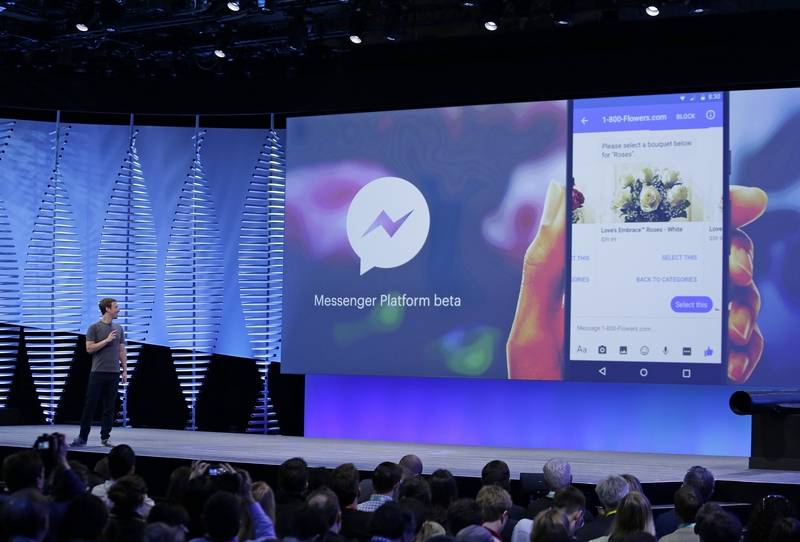
27 Apr 3 Key Announcements from Facebook F8 and What Social Media Marketers Need To Know
Facebook held their F8 Conference last week which is a live broadcast of all the updates and innovations to their platform. After listening to the announcements and processing what we believe this may mean for marketers like us in the social space, we’ve distilled it into 3 key announcements and implications for brands.
1) Innovations in Augmented Reality through Camera Effects

One thing that is clear from the Facebook announcements at the F8 Conference – the platform is investing heavily in Augmented Reality advancements. Previously, we’ve seen 360 degree photos and videos as part of this. This year, Facebook announced that while Augmented Reality has a way to go, they are heavily investing in the camera on our phones combined with their family of applications. Their intent is to deliver unique AR experiences in the near future, since the adoption of glasses or Oculus Rift headsets is still evolving.
As part of this movement in Camera leading AR, Facebook released the Camera Effects platform. This platform is divided into two segments: Frame Studio and AR Studio. Frame Studio gives the public and developers the ability to create frames and filters that can be placed on pictures, videos and Facebook Live posts. AR Studio is in closed BETA and opens up the ability for developers to create interactive effects and animations within posts. All of these enhancements will require Facebook approval, meaning Facebook will be limiting overly branded applications of the technology.
Brand Implications
- Similar to Facebook 360 photos and videos, these new opportunities may open up new content opportunities for brands to leverage and engage with their customers on Facebook. Imagine if an insurance company could take UGC of a persons real home and add Virtual Reality flooding animation directly into the image. Or imagine a coffee company taking a still photo and layering on VR steam to entice and engage users with still photography. Depending on how these tools release, how well they work, and how restrictive they are to brands, they open up more opportunities for brands to create engaging content.
2) Social Virtual Reality with Facebook Spaces

Given Facebook’s focus on Virtual Reality, the platform is also focusing on building a virtual world where users can interact and engage with their real Facebook friends in virtual reality called Facebook Spaces. This will allow users to utilize their Oculus Rift + Touch device to interact and engage with up to 4 friends at a time that they know in real life. A few examples of the experiences users can have together include: chatting, drawing, watching 360 degree photos/videos, making Messenger calls and taking VR selfies with their friends in the virtual world.
Brand Implications
- This is the first indicator of the direction social media is heading – one where users can have shared experiences within social platforms. While there could be many brand implications to this, we also see that the adoption of Facebook Spaces (or any social virtual reality world) is dependent on devices and the adoption of those devices. This announcement is more of a prediction on where Facebook is putting their emphasis over the next 10 years. Brands who want to be seen as innovative or cutting edge may dip their toe in the Facebook Spaces waters to get the street cred of being the “first”, but we predict the majority of brands will sit tight and see if this will become a viable networking option or follow in the footsteps of Social VR worlds like Second Life.
3) Messenger Bot Shop & Other Additions

While Messenger bots were announced last year, Facebook is clearly adding to their capabilities in order to encourage user adoption and discovery of them in the upcoming year. Now, users will be able to find Messenger Bots even easier, through a new Discover Tab to help users find and discover the bots that they may want to utilize. Additionally, Facebook added a feature so that users can scan a QR code and have a Messenger bot provide more information on an object in the real world.
It’s also clear that Facebook wants user interactions with bots to be a bit more social. Now, users can add a conversation with a bot to a 1:1 conversation they are having with a friend. Also, for businesses that have an app that uses Facebook Login, Facebook has built in integrations to help customers seamlessly engage between Messenger bots and branded apps.
Brand Implications
- Facebook is continuing to build Messenger as the place to go when user’s are searching for solutions, and is making it even easier for users to find and discover Bots. The biggest implication for brands is that with the number of useful bots (now over 100k) growing, users are going to increasingly become comfortable utilizing bots to help them get information, make purchases, and interact with friends. This has obvious implications to customer service, product discovery, and so much more. Brands that aren’t using Messenger or Messenger bots should begin discussing how these changes may need to impact customer support in the near future.
These are just a few handpicked announcements that we found most interesting and had the most brand implications from the conference. Click here to read the full list of announcements from f8, summarized in this round up, including enhancements to Facebook insights and the Marketing API .






